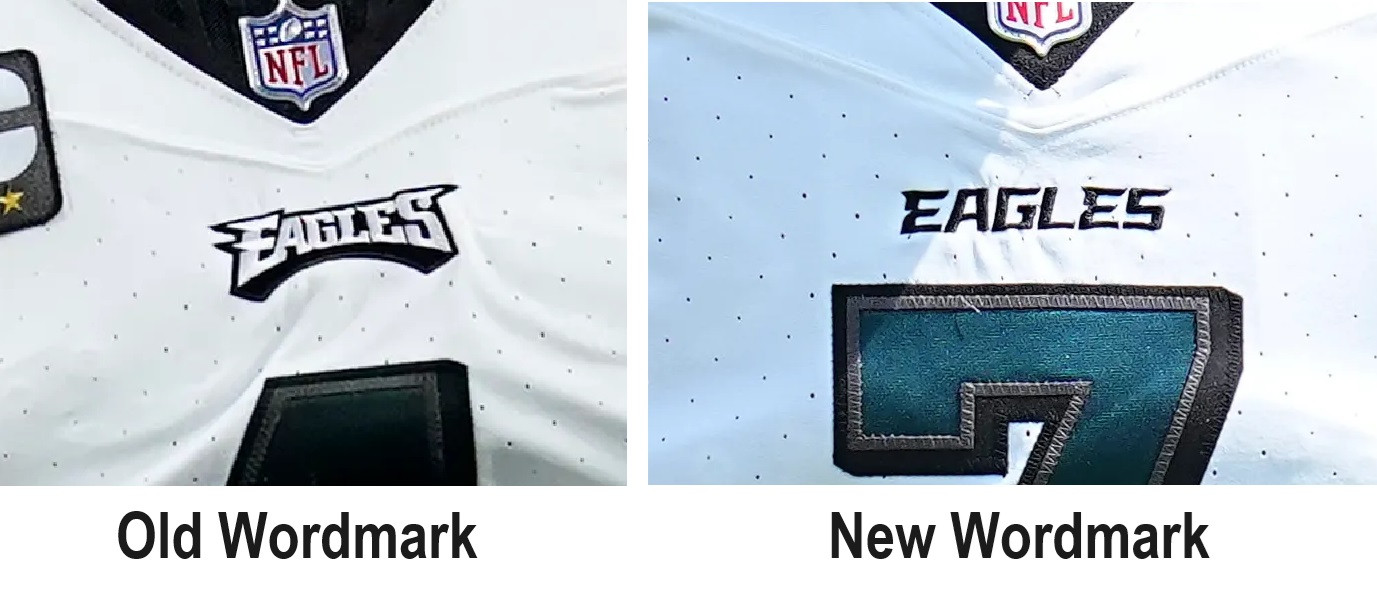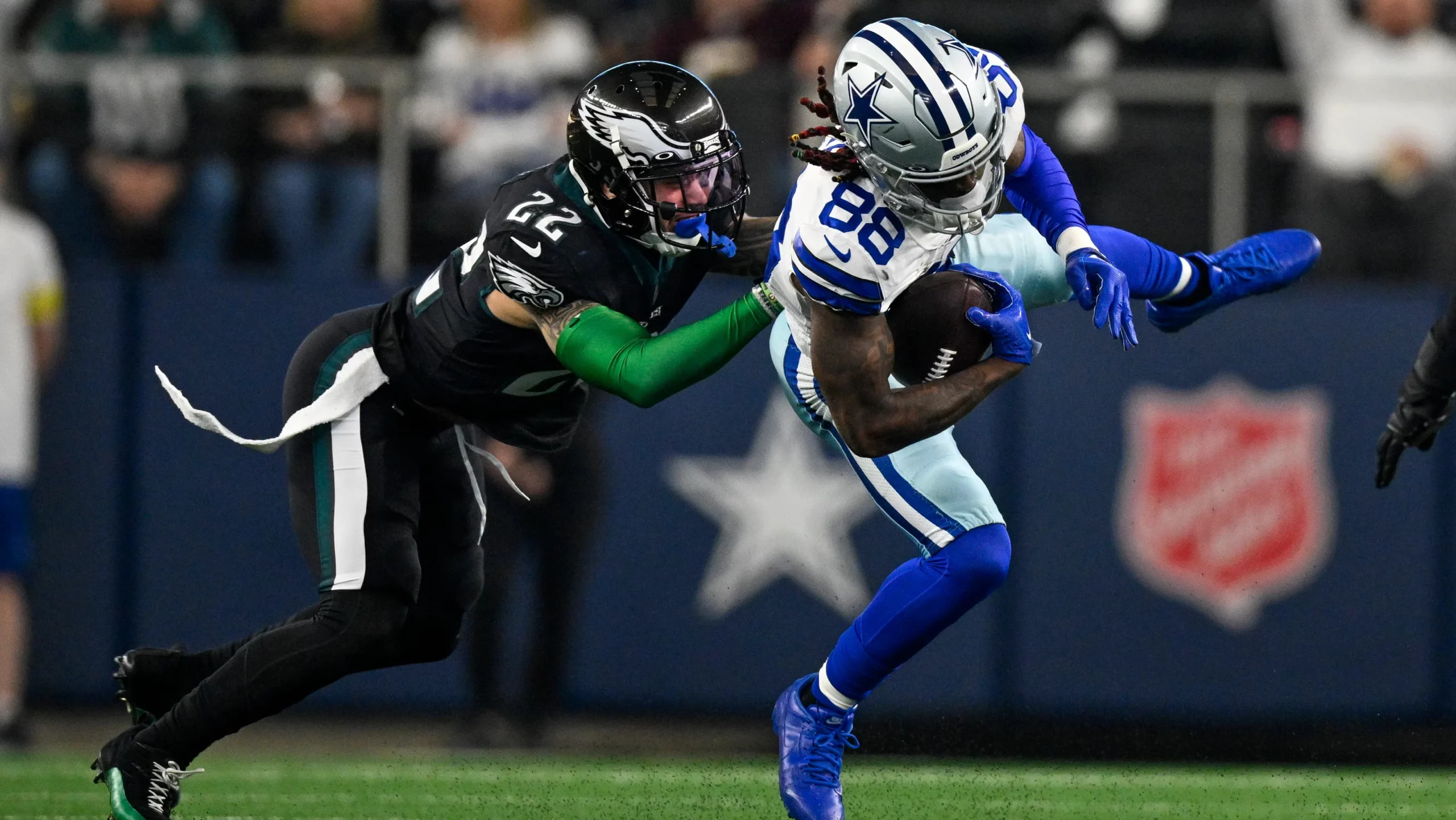In a striking visual decision, the Philadelphia Eagles are set to sport their all-black uniforms for their season-ending game against the New York Giants this Sunday. This announcement has sparked discussion, particularly regarding the NFL’s regulations on alternate uniforms.
Flip the Switch ⬛️@FanDuel | #FlyEaglesFly pic.twitter.com/NonaGWYXkq
The selection of the all-black uniform raises eyebrows due to the NFL’s “alternate” uniform rule, which restricts teams to wearing throwback or alternate uniforms a maximum of three times per season. While the Eagles have twice showcased their Kelly Green throwback jerseys, they have yet to wear their black jerseys this season. Therefore, on the surface, it appears they are within the uniform regulations. However, a closer look reveals a potential conflict.
Earlier this season, during their game in Brazil, the Eagles debuted a unique uniform combination: black helmets paired with white jerseys and black pants. The interpretation of NFL rules suggests that wearing an alternate helmet, regardless of the accompanying jersey, constitutes an “alternate” uniform appearance. If this interpretation holds true, then by wearing the all-black uniforms this Sunday, the Eagles would exceed the permitted three alternate uniform appearances for the season.
Adding another layer to this uniform puzzle is the question of how the Eagles are even authorized to use a third helmet design this season. In April, the NFL broadened its uniform policy, allowing teams undergoing a redesign process to introduce a third helmet option for the 2024 season, with wider availability for all teams in 2025.
Teams going through a re-design process for the 2024 season have been offered a third helmet option, and it will be available for all teams for the 2025 season. The teams must inform the league office of their intent to utilize an alternate color helmet for the 2025 season by no later than May 1, 2024.
The second and third helmets, also known as “alternate color helmets,” can only be worn with one of the club’s authorized optional uniforms (classic, alternate and/or color rush). In addition, if either alternate color helmet is paired with a classic uniform, the helmet colors and designs must be historically compatible.
To the casual observer, it might seem the Eagles are in violation of two stipulations: the third helmet allowance is for teams “redesigning,” and alternate helmets should be paired with “authorized optional uniforms.” So, how did the Eagles manage to reintroduce their alternate black helmet into their uniform rotation?
The answer, surprisingly, lies in a minor, almost imperceptible change to their uniform. This season, the Eagles subtly altered the small wordmark positioned above the jersey number and beneath the collar.

This seemingly insignificant modification officially qualifies as a “uniform modification” in the eyes of the NFL. This technicality, despite no other alterations to the Eagles’ overall uniform design, means the team is considered to have “redesigned” their uniforms for this season. This “redesign” grants them access to the third helmet option and, crucially, triggers the NFL’s “five-year rule,” preventing any further significant uniform changes for that period. For fans hoping for a permanent shift to Kelly Green uniforms, this subtle wordmark change effectively delays that possibility.
However, the question remains about the Brazil game. The Eagles sported black helmets, an “alternate” helmet, with their white jerseys. This pairing seemingly contradicts the rule that alternate color helmets must be worn with “authorized optional uniforms.” It remains unclear if the Eagles received a specific exemption from the NFL for this International Series game, which would explain the apparent allowance of what seems to be a fourth alternate uniform.
You’ve NEVER seen this combo before@FanDuel | #FlyEaglesFly pic.twitter.com/LUf7ZH2JdU
Over recent seasons, some teams have navigated these uniform rules with creative interpretations. The Dallas Cowboys, for instance, technically introduced two alternate white helmets – one for 1960s throwbacks and another for their all-white “Color Rush” uniform. Because both helmets used the same shell color, it was deemed permissible. Similarly, the Carolina Panthers have paired their alternate black helmets with their black jerseys, their designated primary dark uniforms, claiming the all-black ensemble as their Color Rush uniform to circumvent restrictions. The Cincinnati Bengals employed a similar tactic, pairing their new white Bengal helmet with their white primary road jersey, designating the all-white uniform as an alternate or “Color Rush.”
TURN US UP.
It’s Kelly Green Week! pic.twitter.com/7y0wDacGX6
IT’S TIIIIIIMMMMEEE
🎨: @elijah5pittman | #FlyEaglesFly pic.twitter.com/baoMGErGPj
Despite these instances of flexible rule interpretation, these teams generally adhered to the three-alternate-uniform limit. Having already worn black helmets in Brazil and Kelly Green throwbacks twice, the Eagles’ selection of all-black uniforms for the Giants game seemingly pushes them to a fourth alternate, unless the Brazil game was indeed granted an exemption.
The NFL has demonstrated its commitment to enforcing these uniform regulations. Earlier this season, the San Francisco 49ers, facing extreme heat in Santa Clara, requested permission to wear their all-white throwback uniforms. Despite having pre-scheduled their regular red and gold uniforms for that game, the NFL denied their request to switch to white throwbacks but allowed them to wear their red throwback jerseys instead. This was because switching to the white throwbacks would have constituted a fourth alternate uniform appearance, violating the three-maximum rule. This strict enforcement against the 49ers further underscores the question of how the Eagles are permitted to wear a perceived fourth alternate.
The most plausible explanation for the Eagles’ situation is that they received an exemption for the Brazil game. This theory gains traction when considering the initial scheduling conflict for the Eagles-Packers Brazil game. Both teams predominantly wear green, and the game was set to be played in a stadium where green is restricted. To resolve this “color conundrum,” the Eagles, designated as the home team, opted for black helmets, white jerseys, and black pants, effectively minimizing green in their uniform. It is conceivable that the NFL, in facilitating this solution, granted the Eagles an exemption to the three-alternate-uniform rule for the Brazil game.
Assuming the Eagles’ all-black uniforms are indeed within NFL regulations, this upcoming game will mark the fourth occasion the team has donned the all-black uniform with the black helmet. Prior to the single-helmet rule being relaxed, these uniforms were paired with their midnight green helmets. The previous three instances of the all-black uniform occurred during the 2022 season. How did the Eagles fare in those games?
The Eagles first debuted the all-black uniform on November 27, 2022, against the Green Bay Packers, securing a 40-33 victory. They next wore the combination against the Dallas Cowboys on Christmas Eve of 2022, in a narrow 40-34 defeat.

The last time they sported this look was in their 2022 season finale on January 8, 2023, against the New York Giants, winning 22-16. With a 2-1 record in their all-black alternate uniforms and facing the struggling Giants, it might seem predictable that the Eagles will improve to 3-1 in this uniform combination. However, with the Eagles already securing the NFC East title and the #2 seed with a 13-3 record, and with little at stake in this final game, they may opt to rest their starters. While uniform choices are unlikely to directly influence game outcomes, the decision to wear the all-black for the season finale remains an intriguing one.
In conclusion, while questions surrounding the Eagles’ potential breach of the NFL’s alternate uniform rule linger, the most likely explanation points to an exemption granted for their Brazil game appearance. Regardless of the behind-the-scenes rule interpretations, the Philadelphia Eagles will be taking the field in their striking all-black uniforms against the Giants, adding another chapter to the ongoing narrative of NFL uniform policies and team aesthetics.

